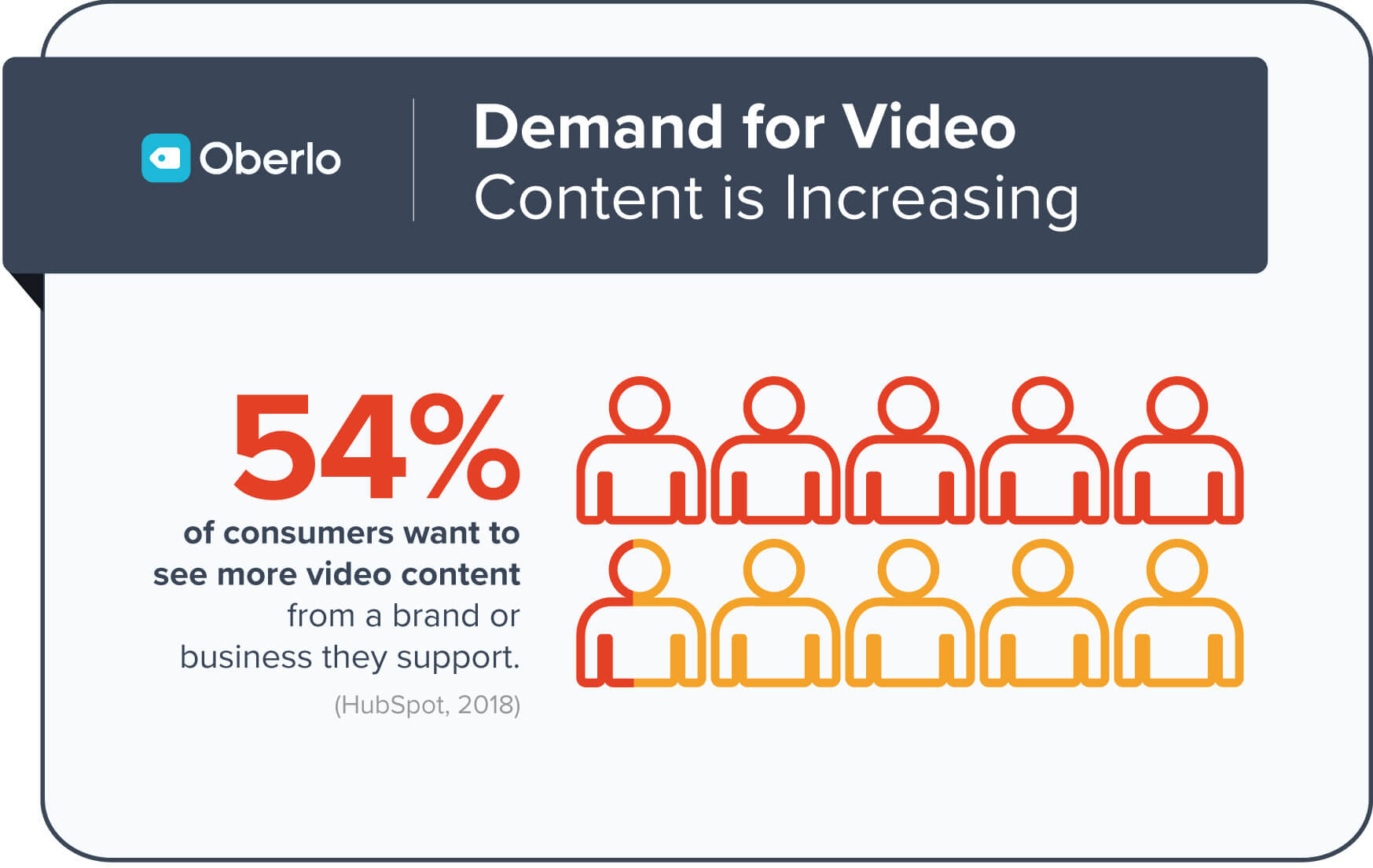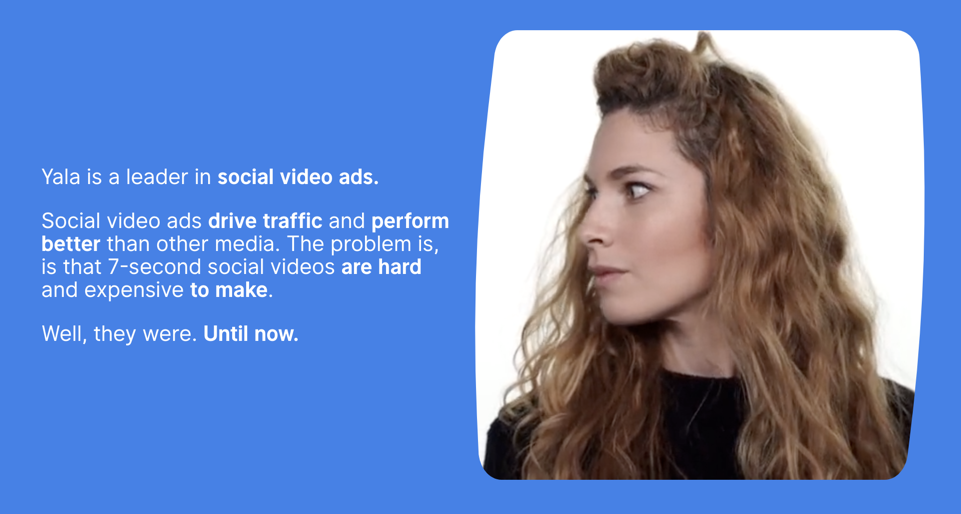At some point around the turn of the millennium, the internet started to completely change the way people consume content and information. More recently, the rise of mobile and social media have changed the way websites, businesses and brands create content to engage with new audiences.
There is no doubt about it – video is now in demand more than ever before, and we can thank YouTube, Facebook and Instagram for most of this demand.
Getting involved with video for social media can be extremely effective as a way to promote products, as a way to deliver information products themselves and as a way to add value by diversifying the services you offer your clients.
With billions of social updates going live daily, it’s hard enough to find something worth stopping for when scrolling through your newsfeed. However, when comparing regular text, images and video updates, video blows the other media formats away.

Consider these stats recently compiled by Oberlo:
- 85% of all internet users in the United States watched online video content monthly on any of their devices (Statista, 2018)
- Studies show that 54% of consumers want to see more video content from a brand or business they support (HubSpot, 2018).
- A 2019 report shows that 87% of marketing professionals use video as a marketing tool (Wyzowl, 2019).
Knowing all of this, it’s now not just a matter of deciding if you want to start using online video to grow your business and brand, it’s simply a question of how.
Let’s take a look at some of the options available for creating, marketing, and tracking video performance on social media.
Creating Video Ads and Content for Social Media
One of the most common reasons why content creators, businesses and brands shy away from using online video, is that they don’t know where to get started. If that isn’t the main concern, it’s also often a concern about the upfront costs of hiring a production team, writing staff and actors for the video.
This may have been the case years ago, but most of this concern is now gone. Content creation on the internet is now easier than ever before. Just like web design and coding are history (for the average site owner), advanced content creation with videos and visual have followed that same path as well.
The concept of creating video content and ads is nothing new. The problem is that many of the options out there are loaded with the same video templates and stock footage – which means your video content likely will look like other brands, and it will probably not be that great.
However, there are some solutions out there that are doing a better job at this than others. A perfect example of a solution that is changing the ways individuals and businesses can create video content in minutes, is Yala.

Another challenge associated with video content creation for social media is that the videos need to be short. If they are too long, then you will quickly lose the attention of your audience. Yala focuses on providing their users with short videos in the seven-second range, which are ideal for grabbing their interest and getting audiences to act.
Through this video content creation platform, users also have the ability to create unlimited 1080p HD videos with text animations, to upload their own logo, to download the videos as GIFs and MP4s, and to schedule videos across different social platforms. However, what makes Yala really different than other video content creation platforms, is its ability to use AI to publish your best content to audiences when they are online and ready to act.
With three membership plans available (ranging from free to $39 per month), they have a content creation platform and strategy in place that works for everyone. The option is also always there to bring in a team to create original video for in-house work and company videos, but for everything else relating to social video and online ads, there are often better alternatives out there.
Reaching Your Target Audience Through Social Media
Once you’ve put in the time and effort to understand why and how to start creating video content for your social media audiences, you then need to start focusing on how to reach your target audience and make sure your ads are being seen by the right people.
There are several ways to accomplish this, such as:
- Posting your video content as a general update to your social profile
- Sharing your best video content to your Facebook Page and Instagram accounts
- Using an automation and scheduling tool like Hootsuite to continually share your content over time
- Taking advantage of Yala’s AI-driven scheduling to set and track video delivery at peak times
- Running paid ad campaigns on Twitter, Facebook and Instagram

With there being so many different options out there for targeting your audience, it’s also important to understand WHO your audience is and where to find them. Hootsuite has a nice reference guide on this, and they simply break it down into the following seven steps.
- Compile data on your current customers
- Look to website and social media analytics
- Check out the competition
- Be clear about the value of your product or service
- Create a target market statement
- Test social ads on your target market
- Revisit your audience research as needed
Each of these methods and solutions will work effectively, but if you are going to be playing around with each of these options, you will also want to make sure you are individually tracking their performance and conversions as well.
Tracking the Performance of Video on Social Media
Depending on the methods and ad serving or scheduling platform you will be using for social media, you may find yourself in a whirlwind of confusion when it comes to tracking conversions and results.
Unlike tracking URLs and landing pages, videos can make their way around the internet and get seen by millions of people – while also never delivering any stats on who saw, where they were seen, or if they resulted in a new click, customers, or ROI for the company.
Some of the best performance tracking solutions out there are often built right within the social media ad platform itself.
For example, Facebook Ads and Instagram Ads are booked using the most powerful self-serve advertising platform to ever hit the market. With both social platforms being owned by the same company, they offer an amazing amount of information, demographic targeting and performance stats for their advertisers. They also work perfectly when creating ads for desktop and mobile users, while also offering advanced targeting options for both.

This can all be broken down into views, clicks, conversions, engagement and much more.
With this in mind, businesses and brands of all sizes will want to have a wide range of videos to play around and test with. Not just different ad copy and footage, but also different run times and targeting as well.
The more you can split test and tweak your ad campaigns, the better the performance you will see over time. This is also why it’s important to have a reliable video content creation strategy, as you will want to keep creating new videos and seeing what version works best.
Video Engagement Marketing Is Here to Stay
Video content is here to stay, and the demand for it is just going to keep increasing over time. Attention spans are shorter than ever before, and your competition is getting fierce.
The next time you are browsing through your favorite social network feed and updates, I want you to look at a couple different things. Not just how much of the content is video, but also what type of content is grabbing your interest the most.
With many social platforms using video for both organic and paid reach, it’s important to see what videos are being shown the most and why or how they grab your interest. Then, apply these same methods into your own video creation and marketing efforts, both for your own brand and your clients’ brands.
As we pointed at the beginning of this article… it’s not a matter of if and when you should be using video, but simply how.
